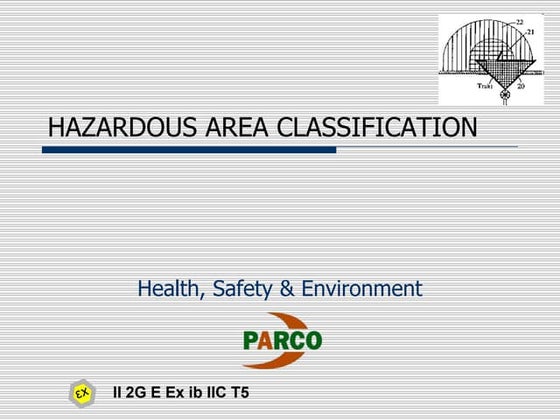Roar Solutions - An Overview
Roar Solutions - An Overview
Blog Article
The 6-Minute Rule for Roar Solutions
Table of ContentsRoar Solutions Things To Know Before You BuyRoar Solutions for BeginnersAbout Roar Solutions
In order to protect installations from a possible explosion a technique of evaluating and categorizing a potentially dangerous location is needed. The function of this is to ensure the right choice and setup of equipment to eventually protect against an explosion and to guarantee security of life.
(https://roar-solutions.webflow.io/)
No devices must be installed where the surface area temperature of the devices is above the ignition temperature of the offered danger. Below are some typical dirt hazardous and their minimal ignition temperature. Coal Dust 380C 225C Polythene 420C (thaws) Methyl Cellulose 420C 320C Starch 460C 435C Flour 490C 340C Sugar 490C 460C Grain Dust 510C 300C Phenolic Material 530C > 450C Aluminium 590C > 450C PVC 700C > 450C Residue 810C 570C The possibility of the threat being existing in a concentration high sufficient to create an ignition will vary from area to area.
In order to categorize this danger an installation is separated right into locations of danger relying on the amount of time the harmful exists. These locations are described as Areas. For gases and vapours and dusts and fibers there are 3 areas. Area 0 Zone 20 A hazardous ambience is highly likely to be existing and may exist for lengthy durations of time (> 1000 hours each year) or also continually Area 1 Area 21 An unsafe ambience is feasible yet not likely to be existing for extended periods of time (> 10 450 C [842 F] A category of T6 means the minimum ignition temperature is > 85 C [185 F] Dangerous area electric tools maybe designed for usage in greater ambient temperatures. This would indicated on the score plate e.g. EExe II C T3 Ta + 60C( This implies at 60C ambient T3 will not be surpassed) T1 T1, T2, T3, T4, T5, T6 T2 T2, T3, T4, T5, T6 T3 T3, T4, T5, T6 T4 T4, T5, T6 T5 T5, T6 T6 T6 A T Class score of T1 indicates the optimum surface area temperature generated by the tool at 40 C is 450 C. Thinking the connected T Class and Temperature rating for the equipment are appropriate for the location, you can constantly utilize an instrument with a more strict Division ranking than needed for the location. There isn't a clear solution to this concern unfortunately. It really does rely on the type of tools and what repair services need to be executed. Equipment with specific examination procedures that can't be carried out in the field in order to achieve/maintain 3rd celebration ranking. Should come back to the factory if it is prior to the devices's service. Area Fixing By Authorised Worker: Complicated screening may not be called for nevertheless specific procedures might need to be adhered to in order for the devices to keep its 3rd party score. Authorized workers must be used to perform the work appropriately Repair work have to be a like for like replacement. New element have to be thought about as a straight replacement needing no special testing of the equipment after the repair is full. Each piece of devices with a hazardous rating ought to be examined individually. These are described at a high degree listed below, but also for more in-depth details, please refer directly to the guidelines.
Get This Report about Roar Solutions
The devices register is a thorough data source of tools documents that consists of a minimum collection of areas to recognize each thing's area, technological parameters, Ex classification, age, and environmental data. The ratio of Comprehensive to Close assessments will be figured out by the Devices Danger, which is examined based on ignition danger (the likelihood of a source of ignition versus the chance of a combustible ambience )and the unsafe area classification
( Zone 0, 1, or 2). Applying a durable Risk-Based Assessment( RBI )method is vital for making certain conformity and security in handling Electrical Equipment in Hazardous Locations( EEHA).
Indicators on Roar Solutions You Should Know

In regards to eruptive threat, a dangerous area is an atmosphere in which an explosive ambience is existing (or might be anticipated to be existing) in amounts that need unique preventative measures for the building and construction, installment and use devices. eeha. In this short article we explore the challenges encountered in the office, the danger control steps, and the required expertises to function safely
These compounds can, in certain problems, form explosive environments and these can have major and awful effects. Most of us are familiar with the fire triangle get rid of any type of one of the 3 components and the fire can not take place, yet what does this mean in the context of hazardous areas?
In the majority of circumstances, we can do little regarding the levels of oxygen airborne, but we can have considerable impact on sources of ignition, as an example electric tools. Unsafe areas are recorded on the unsafe location classification drawing and are determined on-site by the triangular "EX" sign. Below, among other crucial information, zones are split into three kinds relying on the risk, the chance and period that anonymous an eruptive ambience will certainly exist; Area 0 or 20 is regarded the most harmful and Zone 2 or 22 is considered the least.
Report this page